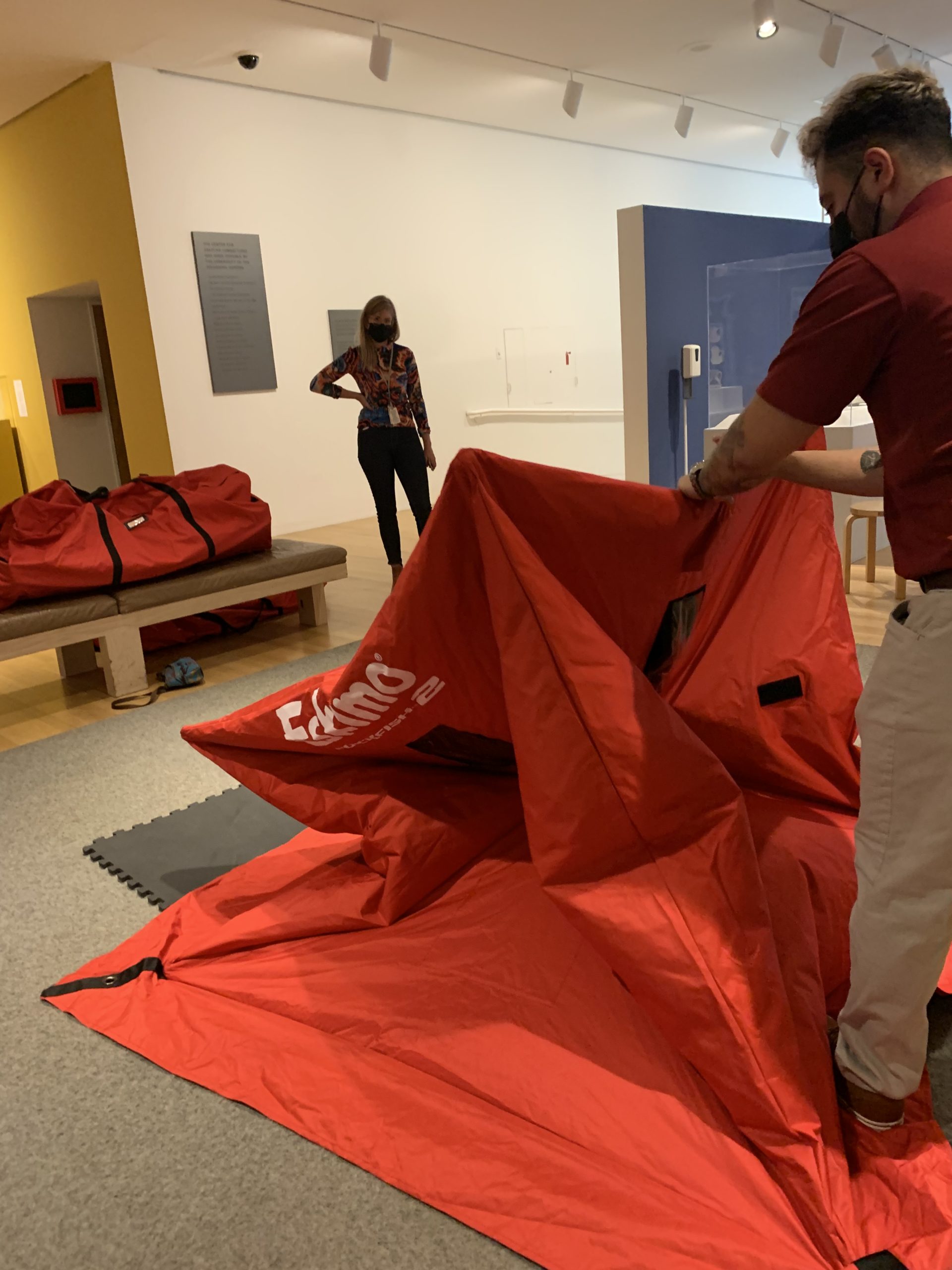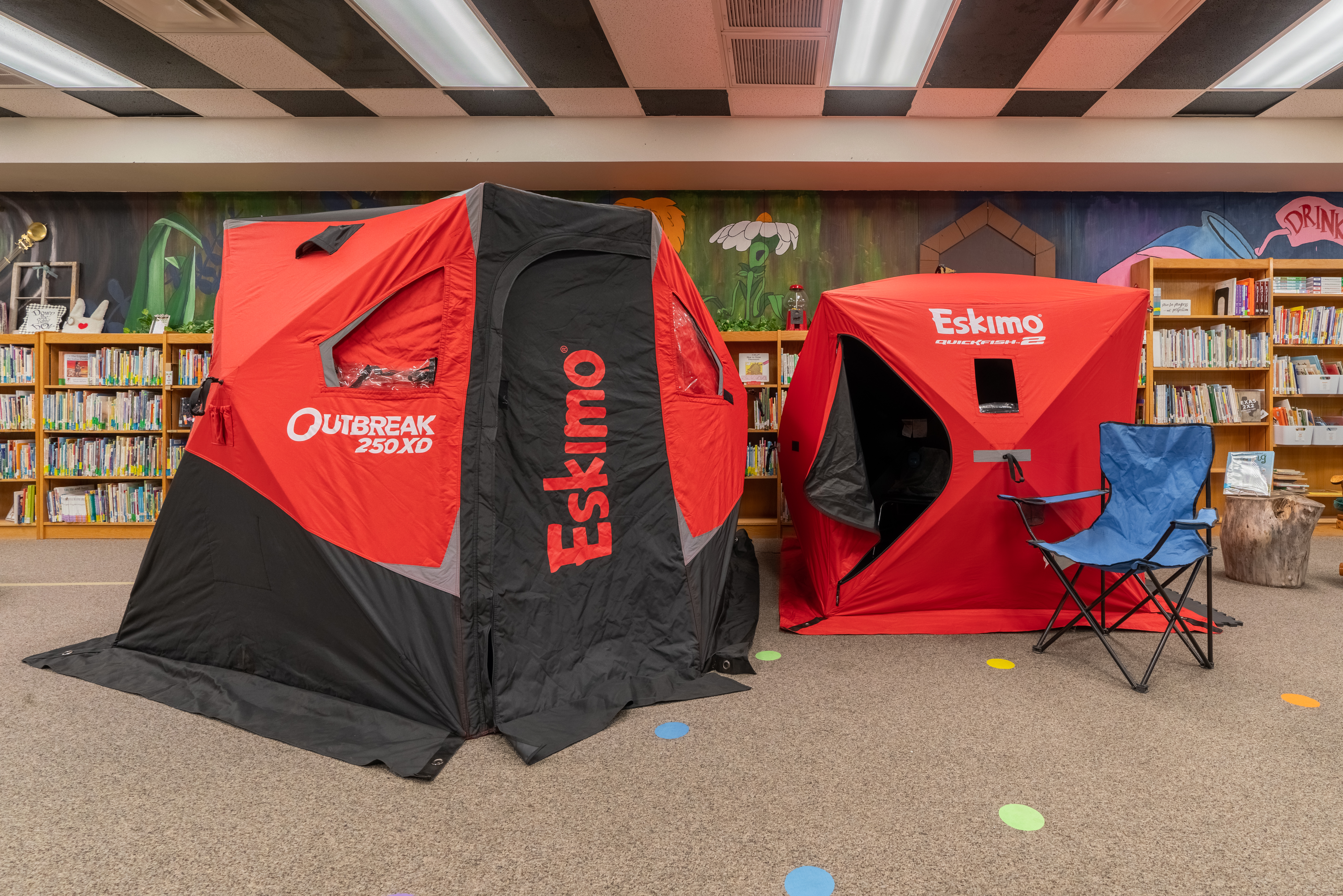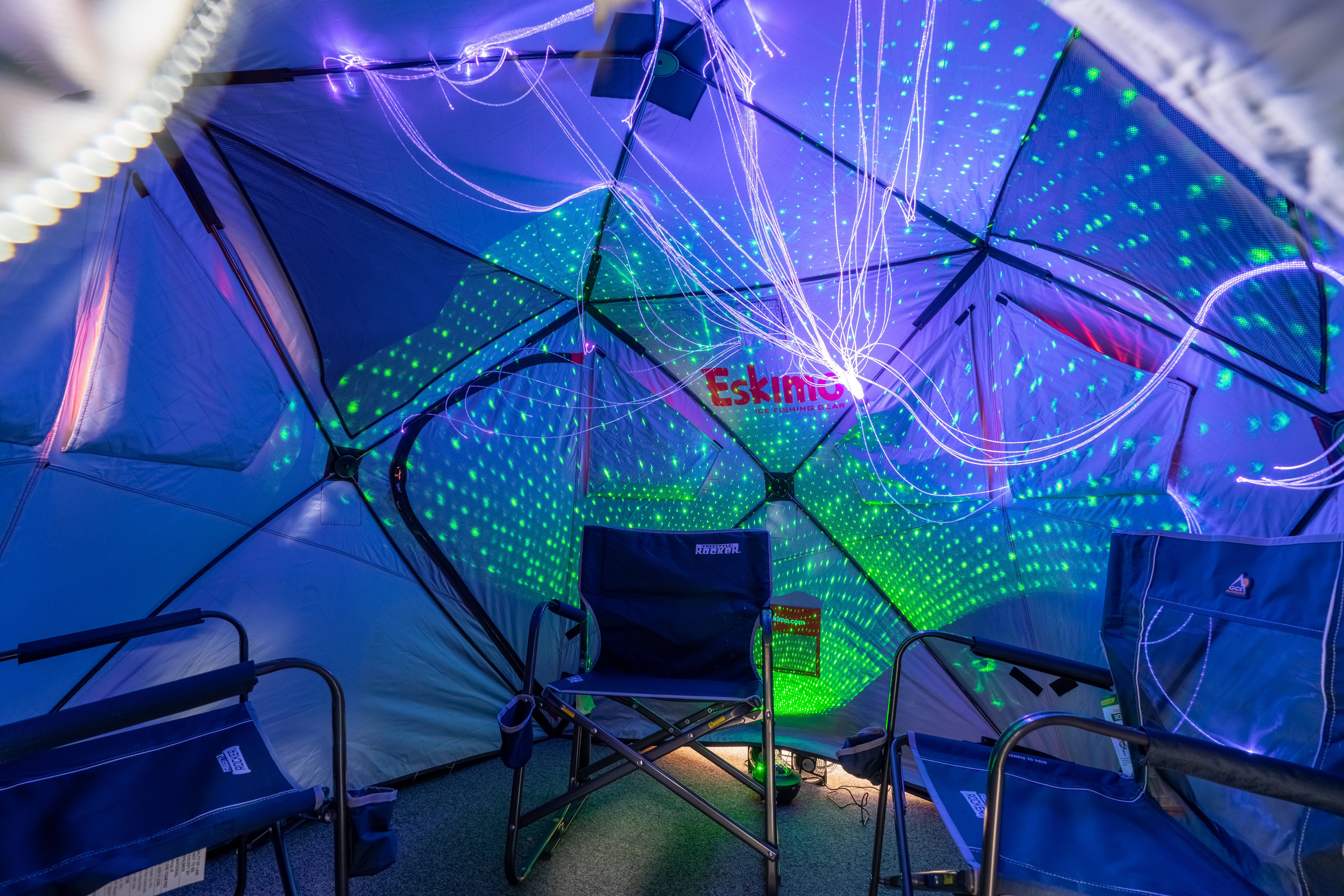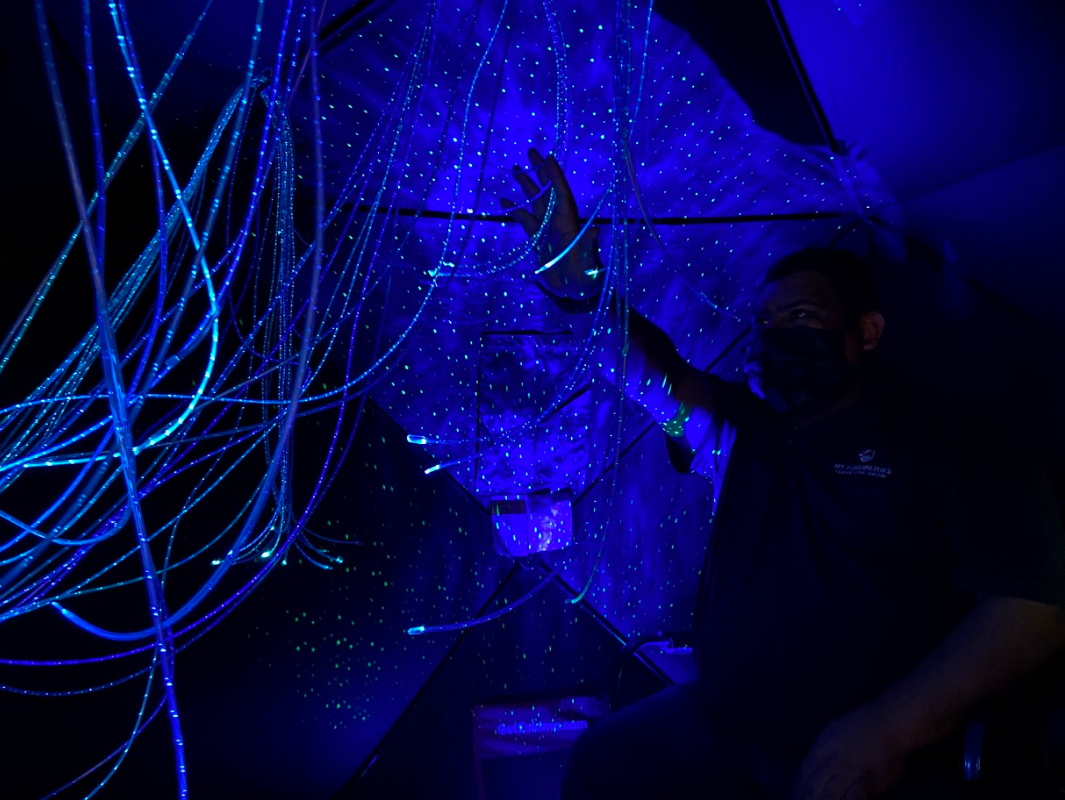Sensory spaces are predictable and controlled spaces that offer multisensory input with a heavy emphasis on vestibular, proprioceptive, and tactile stimulation that promote self-regulation when everyday sensory experiences become overwhelming. While some sensory spaces are designed to fire up their visitors, others are designed to calm them down, and most are set up with the middle in mind. Sensory spaces are designed and implemented with best practices from evidence-based research literature and in collaboration with neurodiverse people, parents and guardians, community partners, and educational institutions.
Sensory Spaces on Wheels
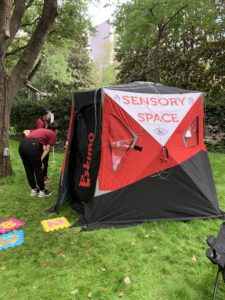
Sensory Spaces on Wheels set up at the Nasher Sculpture Center during their Sensory-Friendly Family Fun: Art and Nature event.
Sensory Spaces on Wheels are portable sensory spaces that are usually set up in conjunction with special events attended by many people, some of whom are neurodiverse or autistic. These portable sensory spaces provide visitors with an opportunity to calm down when the excitement and anxiety of a special event becomes overstimulating. They are an invaluable addition to many community events and can increase the staying power of neurodiverse individuals by providing them with an escape to relax and stay centered.
Ice fishing shelters are repurposed to create Sensory Spaces on Wheels; they are equipped with objects that provide visual, auditory, tactical, proprioceptive, and vestibular input. These objects provide sensations such as a back-and-forth movement (e.g., rocking chairs), deep pressure touch (e.g., weighted lap pads), and body warmth (e.g., weighted blankets). Sensory Spaces on Wheels also use sensory lighting (i.e., fiber optic cables and starlight projections) to create a soothing and comforting effect. Sensory lighting also provides touch awareness and promotes visual tracking.
